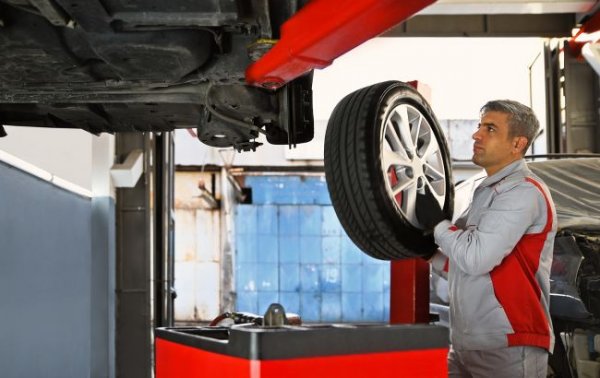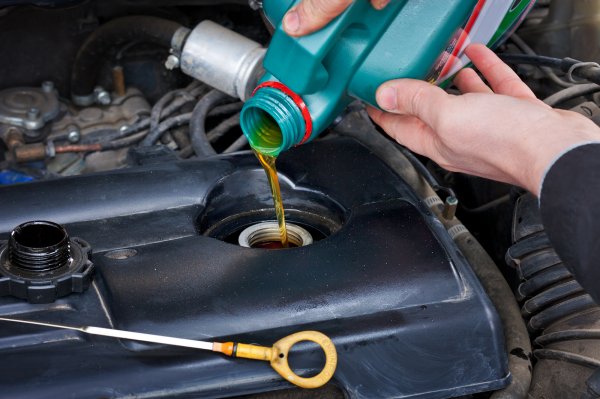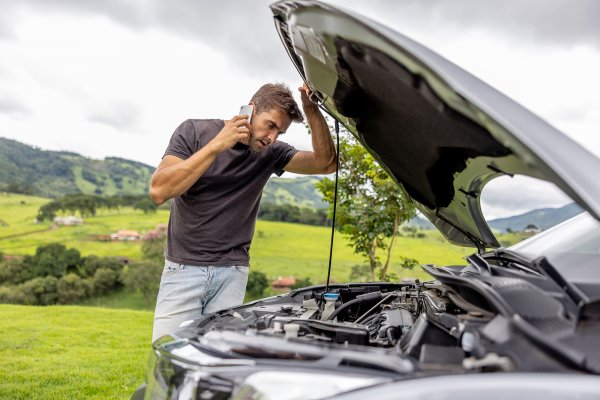
Photo: Do-it-yourself car maintenance (Getty Images) Author: Konstantin Shirokun
It happens that the scheduled maintenance of a car has come, but the owner for some reason cannot visit the service station. Is it possible to carry out TO-1 or TO-2 on your own?
Read about whether it is worth servicing your car yourself instead of going to a car repair shop in the RBC-Ukraine article.
Every car requires service technicians' attention from time to time – to replace oils and so-called consumables, to monitor the condition of the main units and systems. Automotive engineers once came up with and introduced a system of scheduled maintenance (technical service) to preventively replace worn parts and materials. This is necessary so that the car does not require attention during the interservice period and does not let the owner down on the road. Therefore, it is important not to miss the next maintenance. Which, by the way, usually come in two levels of complexity – TO-1 and TO-2.

The range of works for TO-1 for most cars is small, for modern models it is carried out every 10-15 thousand kilometers, for some models – every 20 thousand. TO-2 is carried out after several TO-1 and consists of more complex operations, in particular, related to disassembling individual engine systems.
Is it possible to do maintenance yourself?
Yes, a positive answer can be given regarding TO-1 – even if the motorist has only basic mechanic skills. To do this, the car owner needs to prepare a list of all works for TO-1 – for example, by obtaining it from an official dealer or on the website of the importing company. Usually, this list consists of operations that must be performed physically, and of control operations, i.e. inspection of units and assemblies and checking of certain parameters.
Replacement of consumables
It is better to start with the most difficult, because replacing fluids and parts is a troublesome stage that requires the most time and money.
Air filter . The engine air filter is actually an insert, a so-called filter element, which is installed in a plastic housing. Before removing its cover, take a photo of it or remember its position well. The same applies to the filter element – it is important to install them in place tightly and with the right side.
Engine oil and filter . Don't make a mistake with the plug in the sump – it should be the plug in the engine crankcase. It is better to drain the oil when it is warm, do not forget to prepare a container to collect it. Be prepared for problems with unscrewing the oil filter. It is unlikely that you should buy a special key for this, because for one time you can make an auxiliary device from a belt from a bag and a large screwdriver. Often you can only get to the filter from an inspection pit or overpass.

Fuel filter. On gasoline cars, the fuel filter is replaced every 60-100 thousand kilometers, and on diesel cars this is usually done at each TO-1. On some models, the filter is changed together with the housing, on others – only the insert. In the latter case, you will have to disassemble the filter housing, for which you may need a puller or a certain homemade device. Be prepared to deal with the hose latches, and it is also important not to mix up the hoses when reassembling the unit.
Cabin air filter . If you are tempted to save on this part, know that if the cabin filter is clogged, the windows will fog up, meaning the driver will lose visibility. As a last resort, you can remove the old clogged element and drive without it for a while. To get to the cabin filter, you sometimes have to dive under the dashboard, so it is better to first study this procedure using video tips on the Internet.
Control operations
- Working fluids . It is necessary to check the level of antifreeze, brake fluid and power steering fluid, focusing on the Min and Max marks on the tanks. The amount of oil in the engine and gearbox is also checked. All levels must be restored, if the losses are significant, this fact should be recorded in order to discuss the problem with professionals later.
- Leaks . All pipes and units from under the hood and from under the car should be inspected. Obvious leaks are an alarm signal, and light traces near the joints of parts and the exit of shafts, the so-called sweating, are acceptable.
- Lighting . With the help of an assistant or using the walls of surrounding buildings as a screen, check how your headlights, brake lights, turn signals, reversing lights and fog lights work.
- Chassis. Look for damage to the rubber boots of the hinges and drive shafts. The rubber parts of the silent blocks should not have deep cracks, the tires should not have lumps or cuts, all the wheel balance weights should be in place. Only slight fogging is allowed on the shock absorber housings, but no leaks. The disc brake pads should have a thickness reserve of at least 3-4 mm, but we would not advise removing the rear drum brake drums to check the mechanisms and pads – leave this inspection until specialists do it.
In brief
If you are very skeptical about your success as a car mechanic, look at the situation from the other side: try to understand when you will have the opportunity to visit a service station and entrust the scheduled maintenance to professionals? If it will be quite soon, within two or three months or a couple of thousand kilometers, then it is quite possible to wait. Yes, exceeding the terms of oil change and certain consumables will not add to the age of the car, but it will not significantly reduce it either. The main thing is not to abuse such relaxation of the regulations and next time meet all the deadlines.
Materials from Autocentre and Motor were used in preparing this article.
Let us recall that RBC-Ukraine recently reported why pedestrians are not always right.
